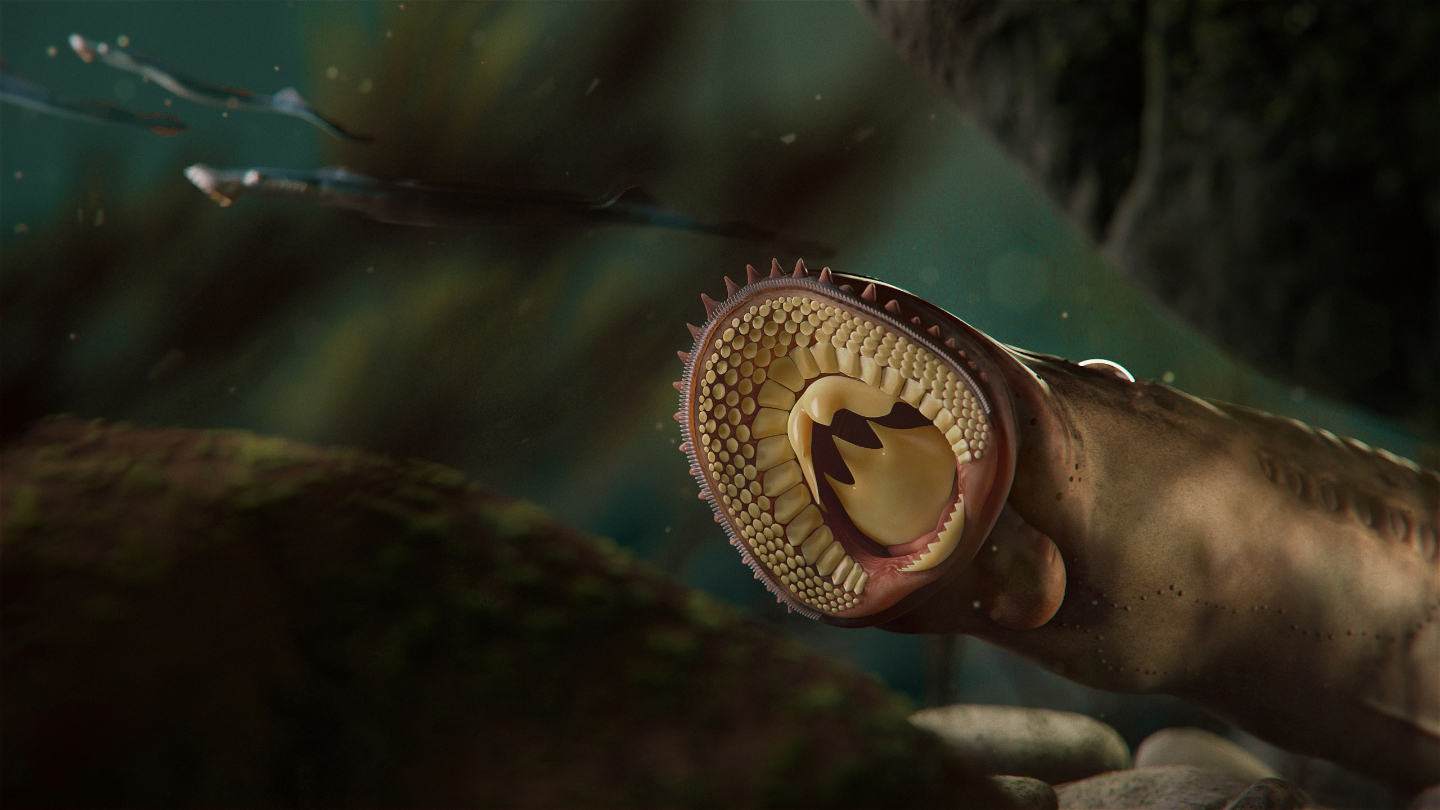Found in roughly 160-million-year-old rocks in North China, the Yanliao Biota is a diverse array of beautifully preserved fossils, including dinosaurs, pterosaurs and even early mammals. But it isn’t all fur and feathers. Paleontologists have now unearthed fossils of two surprisingly large ancient lamprey species, swimming menaces that latched onto and bored holes into their unsuspecting neighbors.
The fossils are the oldest lamprey specimens to clearly indicate a preference in feeding mode, say paleontologist Feixang Wu of the Chinese Academy of Sciences in Beijing and colleagues. In fact, the tooth arrangement of both ancient species strongly resembles that of a modern species of Southern Hemisphere flesh-eating lamprey.
Yanliaomyzon occisor — “occisor” is Latin for “killer” — was the bigger of the two, about 64 centimeters long, the length of a small dog. The species name for its smaller cousin, Y. ingensdentes, comes from the Latin for “large teeth.” Modern adult lampreys range in length from about 15 to 120 centimeters.
Lampreys, a lineage of jawless vertebrates, have been around for 360 million years. But they rarely fossilize well, leaving large gaps in their evolutionary record and uncertainty about their ecology and when their feeding styles evolved.
2023-10-31 11:00:00
Post from www.sciencenews.org
